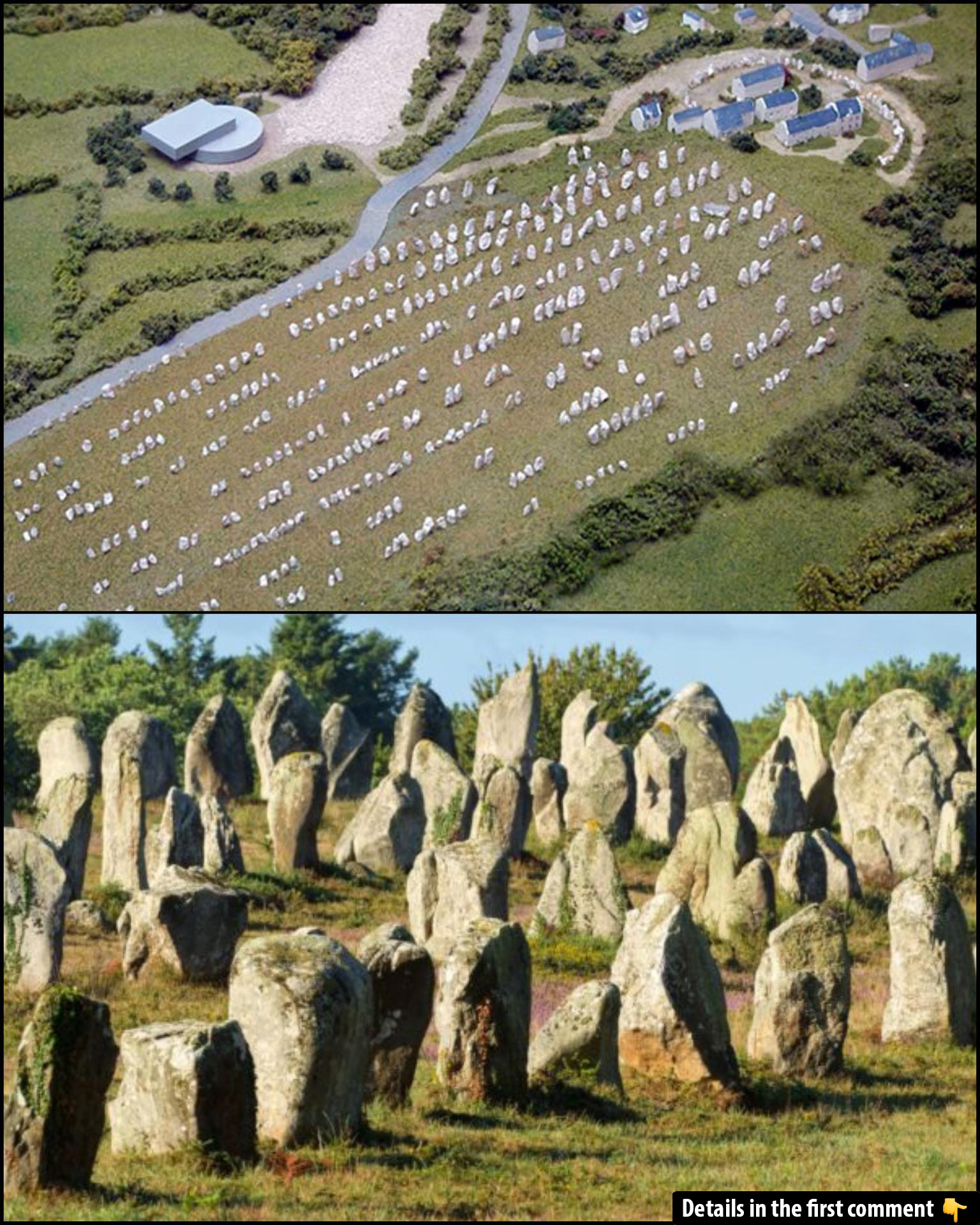Nestled in the coastal region of Brittany, France, the Carnac Stones stand as one of the most extraordinary and enigmatic archaeological sites in the world. With over 3,000 megalithic stones scattered across the landscape, this vast collection invites curiosity and speculation about the ancient people who built them. Despite their age, these stones continue to captivate scholars and visitors alike, each stone holding a mystery waiting to be uncovered. As we explore the significance of the Carnac Stones, we delve into a world that predates written history, a world shaped by the hands of ancient builders whose purpose still eludes us.
The Prehistoric Origins of the Carnac Stones
The Carnac Stones are a testament to the ingenuity and vision of the Neolithic people who constructed them between 3300 BCE and 4500 BCE. These stones are primarily menhirs, tall upright stones, some of which stand as high as 20 feet. The ancient builders, thought to be pre-Celtic peoples of Brittany, carefully placed over 3,000 stones in specific patterns, creating alignments, tombs, and enclosures. The exact reason why the people of Carnac created these immense structures remains a mystery, but there are a few prevailing theories.

One such theory is that the stones served as markers for territories, with each megalith representing a different group or tribe. The stones could have also had a religious or ceremonial purpose, possibly linked to the worship of ancestors or the celestial bodies. The alignment of the stones with the sun’s movements suggests that these monuments may have been used for astronomical observations, marking important seasonal events like solstices and equinoxes.

Video
Tune into this video from Ancient Aliens to explore the mystery of the Carnac Stones, as archaeologists attempt to unravel their origins and significance in Season 9.
Exploring the Megalithic Alignments
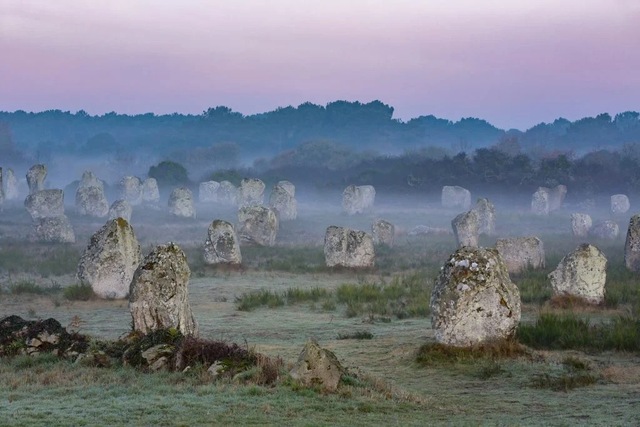
The Carnac Stones are divided into three major alignments: Menec, Kermario, and Kerlescan. These alignments consist of long rows of menhirs, with some rows stretching up to half a mile in length. The scale of these alignments is truly awe-inspiring, and their precision is remarkable, given the technological limitations of the time. Some scholars believe that these alignments were designed to track the movements of the sun, specifically during the solstices. The alignment at Menec, for example, has been observed to follow the sunrise during the summer solstice, a clear indication of the site’s astronomical significance.
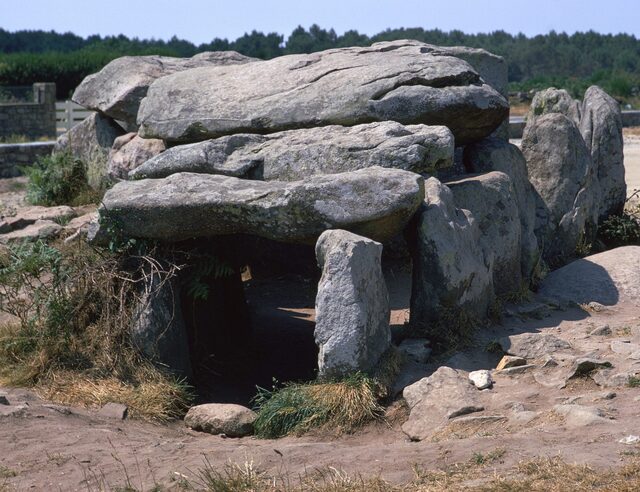
These vast alignments, stretching across the landscape like a network of ancient pathways, may have been used by the people of Carnac to connect different parts of the region, allowing them to navigate the landscape with a sense of direction and purpose. The menhirs, when viewed from above, seem to form a pattern of interconnected lines, suggesting that they may have been intended to create a path or road for ceremonial or practical purposes.
The Purpose and Significance of the Carnac Stones

One of the most intriguing aspects of the Carnac Stones is the unanswered question of their purpose. Were they intended as a form of communication, a way for the Neolithic peoples to mark their land or communicate with the heavens? Or were they designed for more spiritual or ceremonial purposes, such as rituals or rites of passage?
Some scholars suggest that the stones were part of a larger religious or spiritual framework, representing a connection between the earthly and divine realms. The stones could have been viewed as symbols of the ancestors, with the alignment serving as a path for the spirits to travel between the world of the living and the afterlife. The presence of dolmens, or burial chambers, nearby further supports the idea that these megaliths had a sacred and ritualistic role in the lives of the people who created them.
Others propose that the stones were part of a system for tracking the movement of the sun and the stars, a form of primitive astronomy that allowed the people of Carnac to predict seasonal changes and plan agricultural activities. The precision with which the stones are aligned suggests a sophisticated understanding of celestial mechanics, possibly even knowledge passed down through generations of astronomers.
The Cultural Importance of the Carnac Stones

The cultural importance of the Carnac Stones cannot be overstated. They represent the work of a highly organized and skilled society that was able to undertake such monumental construction projects. The stones themselves were cut from local granite and moved into place using rudimentary tools, including levers and rollers. The sheer scale and complexity of these arrangements indicate a well-established social structure, possibly with a specialized workforce dedicated to the construction of these megaliths.
Over time, the Carnac Stones have become a focal point for myth and legend. Early stories surrounding the site claimed that the stones were the petrified remains of Roman soldiers turned to stone by the wizard Merlin. Later, the stones were attributed to the Druids, the ancient Celtic priests, who were believed to have used the site for their religious rituals. In more recent times, the stones have been linked to theories involving extraterrestrial beings, with some suggesting that the site was created by aliens or that the stones serve as a message from otherworldly visitors.
The Role of the Stones in Ancient Trade and Connectivity
Archaeological evidence suggests that the people who built the Carnac Stones were not isolated from the wider world. The discovery of pottery, beads, and copper tools from Spain and Italy indicates that there were trade routes connecting Brittany with other regions of Europe. These trade connections could have played a role in the construction of the Carnac Stones, with ideas and materials being exchanged between different cultures.
The Carnac Stones themselves may have served as a symbol of the interconnectedness of the ancient world, a marker of a society that was part of a larger network of trade and cultural exchange. The ability to transport such massive stones and create such intricate alignments suggests a level of organization and coordination that goes beyond what was previously thought possible in the prehistoric world.
Geoglyphology and the Mystical Science of Decoding the Stones
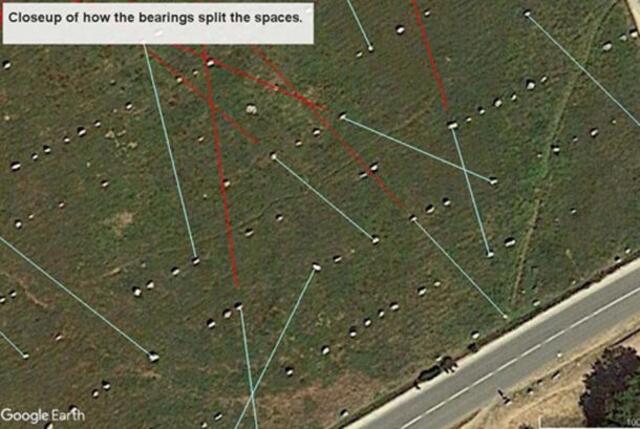
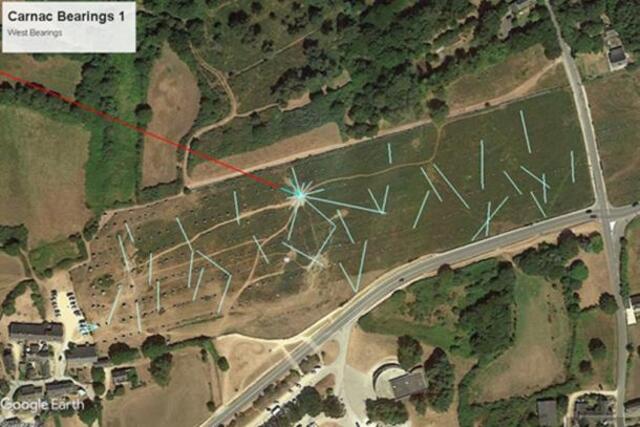
In recent years, the field of geoglyphology has emerged as a key tool in understanding the meaning and purpose of the Carnac Stones. Geoglyphology is the study of ancient earthworks and patterns, including stone alignments, that are used to define territories or convey information. In 2004, researchers began applying the principles of geoglyphology to the Carnac Stones, revealing that the stones may have been part of a larger system of territorial marking, with each alignment and arrangement representing a different cultural or political entity.
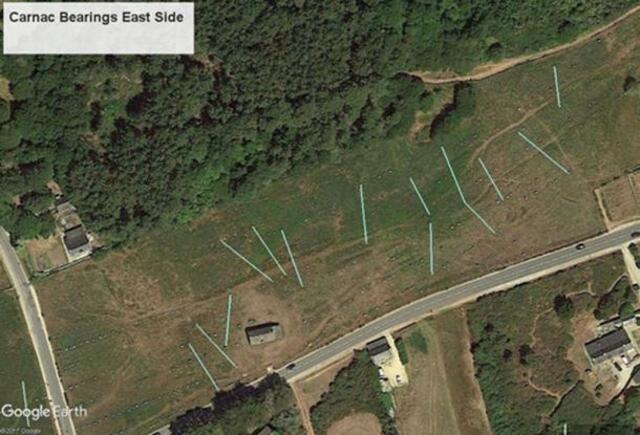
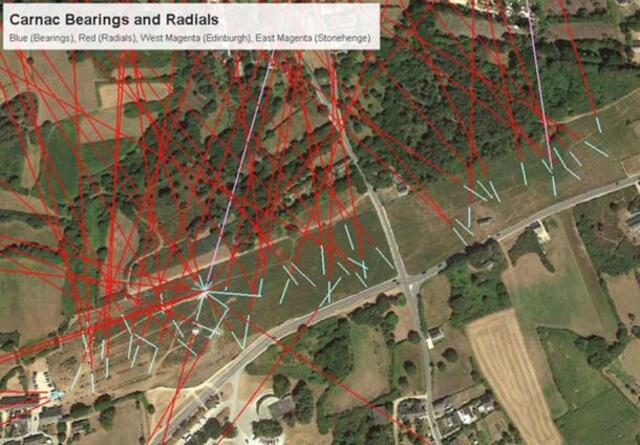
By applying these principles, scientists have begun to decode the Carnac Stones in ways that were previously thought impossible. The stones are now seen as part of a complex system of communication, possibly used to mark the boundaries of territories or to indicate sacred or ritualistic spaces.

Key Discoveries and Archaeological Findings at Carnac
Over the centuries, archaeologists have made numerous discoveries at the Carnac site, uncovering a wealth of artifacts that shed light on the lives of the people who constructed the megaliths. Pottery, tools, and even human remains have been found at the site, providing a glimpse into the everyday lives of the Neolithic people.
One of the most significant discoveries was made by archaeologist James Miln in the 19th century, who uncovered a burial site near the menhir alignments. The findings included pottery, copper axes, and beads, many of which were made from materials imported from other regions, suggesting that the people of Carnac had access to long-distance trade networks.
The Enigmatic Alignment and Its Connections to Other Megalithic Sites
The alignment of the Carnac Stones is not unique; other megalithic sites, such as Stonehenge in England and the pyramids of Egypt, share similar features, suggesting a shared cultural or religious significance. The similarities between these sites have led some scholars to propose that there was a widespread megalithic culture that spanned across Europe and into Africa and Asia.
The alignment of the stones at Carnac, in particular, has been linked to the movements of the sun and the stars, with some researchers suggesting that the site was used as an astronomical observatory to track celestial events. The alignment with the sunrise during the solstices, in particular, is a feature that is common to many megalithic sites, and may have played a role in ancient religious or agricultural practices.
Visiting the Carnac Stones Today: A Modern Exploration
Today, the Carnac Stones continue to be a major tourist attraction, drawing visitors from around the world who are eager to explore this ancient site and unravel its mysteries. The site is open to the public, with guided tours available that provide a deeper understanding of the history and significance of the stones. Visitors can also explore the nearby museum, which houses a collection of artifacts recovered from the site, including pottery, tools, and sculptures.
Despite the challenges of preservation, the Carnac Stones remain a testament to the ingenuity and skill of the prehistoric peoples who constructed them. As one of the most important archaeological sites in Europe, the Carnac Stones continue to captivate the imagination of those who visit, offering a glimpse into a world long past and a reminder of the enduring mystery of ancient civilizations.

Video
Watch this video from Ancient Aliens to explore the top 4 mesmerizing alien structures that continue to baffle researchers and ignite curiosity.
Conclusion: The Enduring Legacy of the Carnac Stones
The Carnac Stones stand as a monument to the past, a testament to the skill, creativity, and spiritual beliefs of the people who constructed them. As the largest collection of prehistoric stone monuments in the world, they offer a unique glimpse into a society that has long since disappeared, leaving behind only the stones as a legacy of their existence.
Despite the many mysteries that surround the Carnac Stones, their significance in the context of ancient history and archaeology cannot be overstated. From their use as territorial markers to their role in ancient religious rituals, the stones continue to captivate the imagination and inspire new generations of researchers and visitors alike. As we continue to study these enigmatic structures, we can only wonder what other secrets they may still be hiding beneath the surface, waiting to be discovered.
